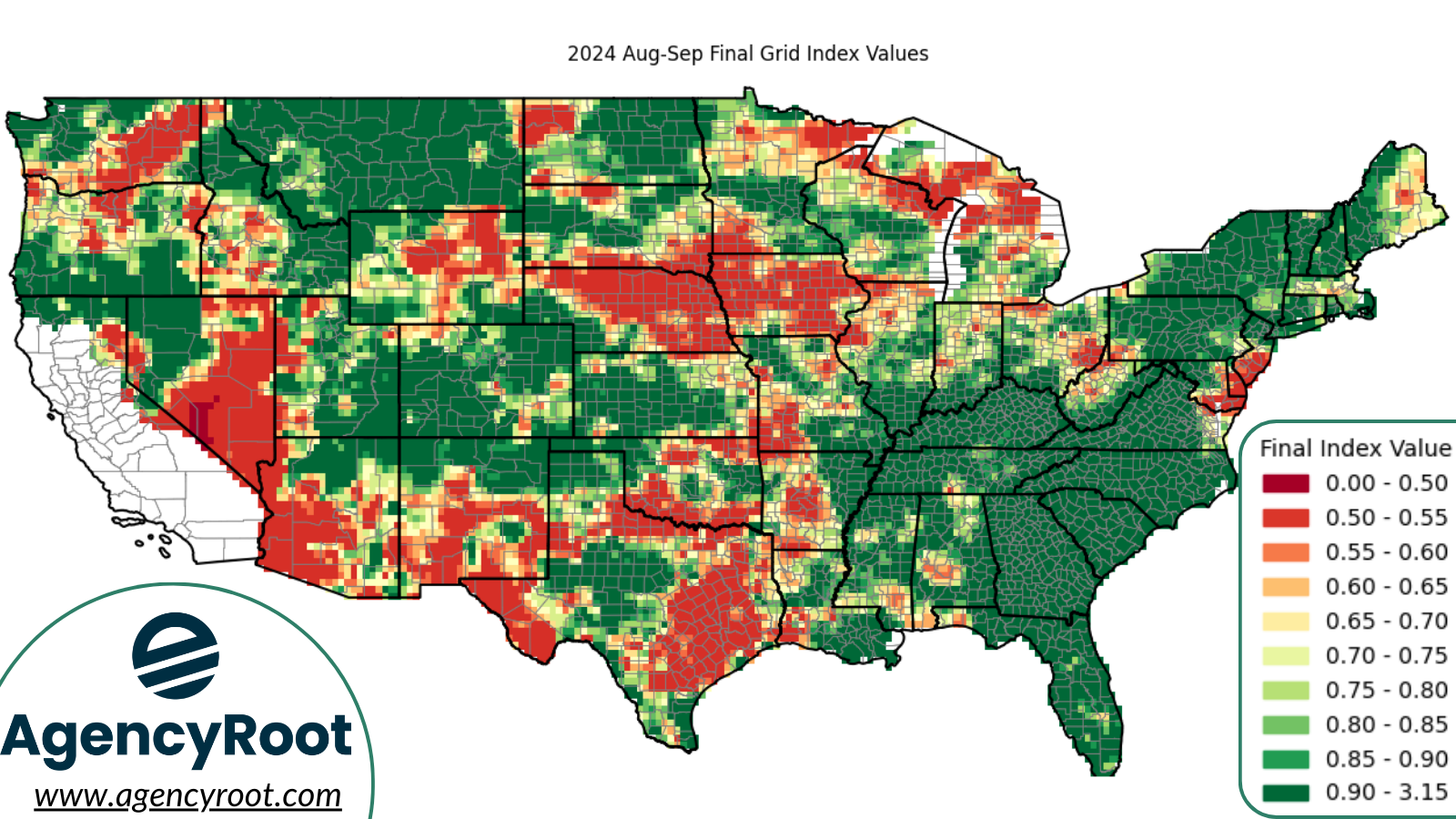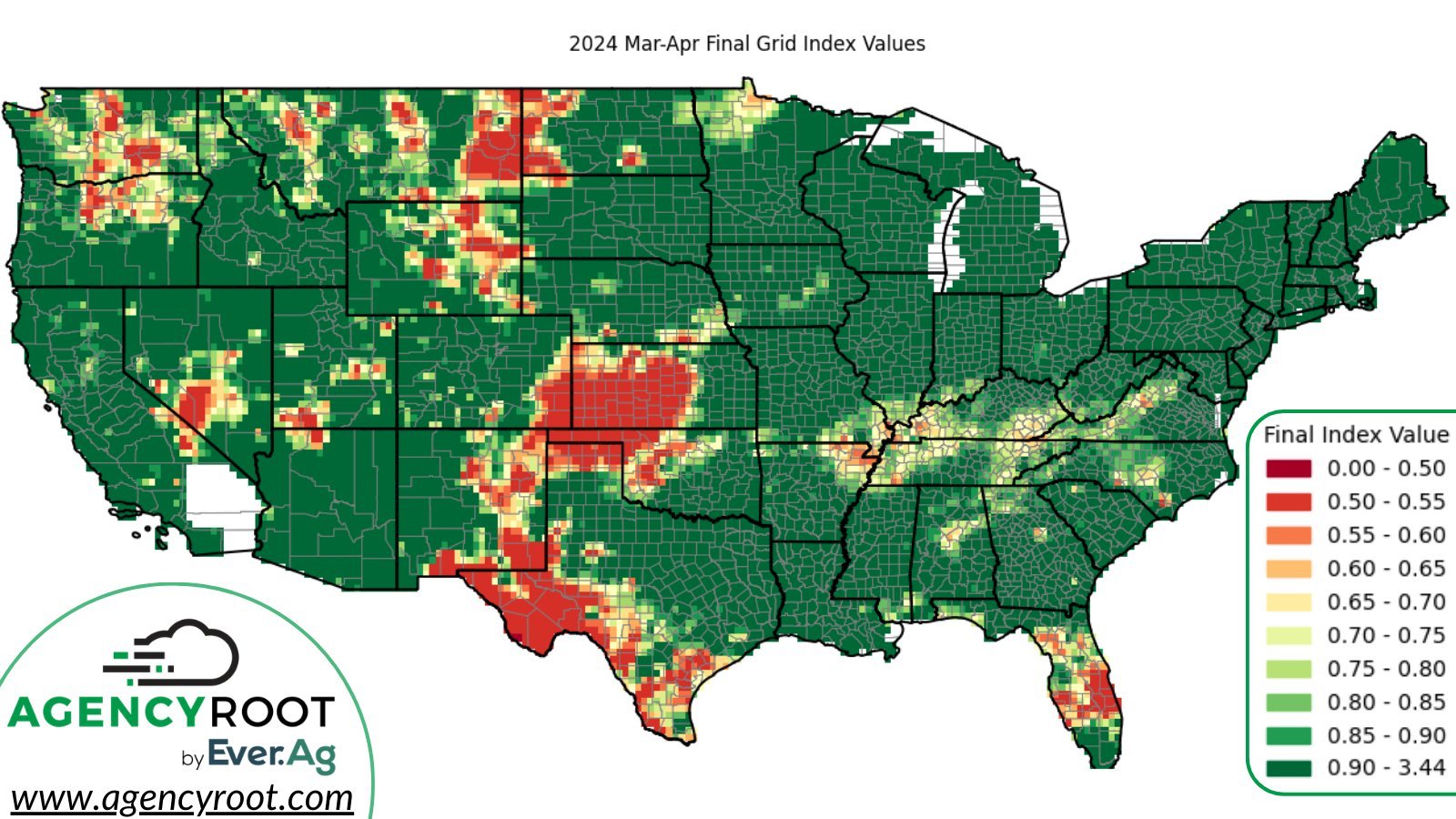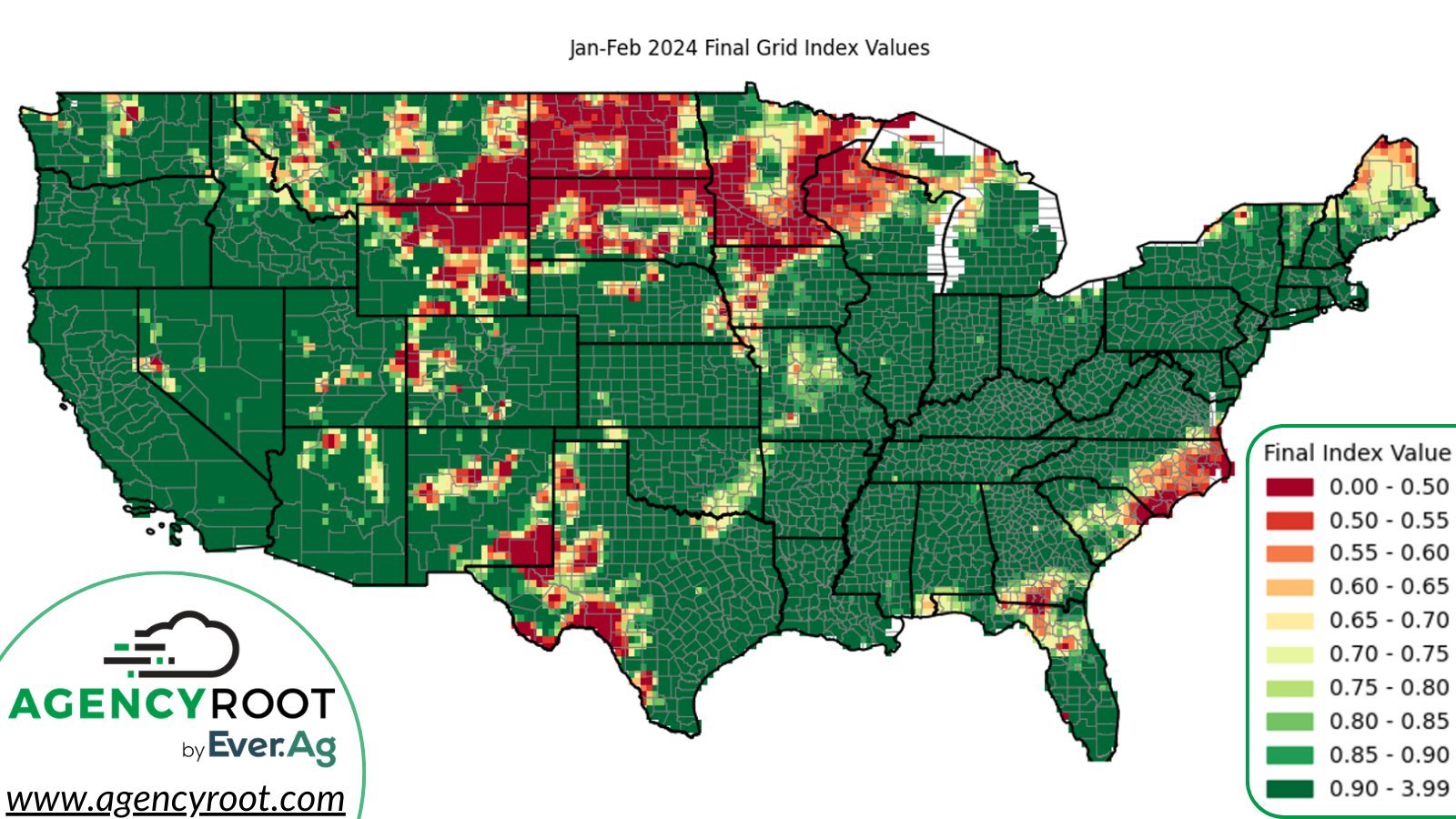PRF (RI)
Pasture, Rangeland, Forage (Rainfall Index) Insurance
Overview & Key Points - 2025 Crop Year
December 1st, 2024 sign-up deadline for the 2025 Crop Year (Jan 1. to Dec. 31)
PRF is a federally subsidized option to insure established perennial pasture, rangeland or forage (alfalfa) used to feed livestock (hay or graze) for a single peril - lack of rain
PRF helps to offset additional expenses during dry times for things like:
Additional feed costs - buying hay or other feed
Additional irrigation costs (if irrigated forage)
Costs associated with destocking and depopulating
PRF has grown significantly in popularity over the last couple of years - it is now one of the largest commodity insured by a federal program & likely to grow with many more acres eligible
This seems to be driven primarily by the high subsidy rates of over 50% which results in the historical loss payouts being greater than the producers’ premium over time by a fairly wide margin.
PRF type ground covers approximately 55% of all U.S. land - nearly 650 million acres
2023 PRF insurance national stats:
61,000 policies, 1.35B premium
Subsidized
55% subsidy at the 85% coverage level
Subsidy rate based on coverage level
Coverage Level (Subsidy) = 70% (59%), 75% (59%), 80% (55%), 85% (55%), 90% (51%)
BFR additional subsidy benefit applies to Margin as well
QUOTE EXAMPLES
Quote parameters:
85% coverage level (55% subsidy), 150% productivity factor
‘Even’ interval periods = FM, AM, JJ, AS, ON = Feb. through Nov.
Grazing - Saunders county (Grid ID 25334):
$70.13 /ac coverage
$4.77 /ac producer premium
Haying NI - Saunders county (Grid ID 25334):
$307.27 /ac coverage
$20.89 /ac producer premium
Based on history, this has a return (ROI) of 189% (almost a 2 to 1 payout)
PRF has such a high payout ratio primarily because of the significant government subsidy
Very Simple
Loss payments are automatically calculated and paid out
No adjuster or claim submission necessary
No production reporting or production history required
You can CUSTOMIZE your coverage by choosing:
Coverage Level: available from 70% to 90%
With the ability to insure at higher levels, like 85 and 90%, you have a smaller deductible than normal, but premiums are still more affordable due to the high federal subsidies.
Intervals: you select which intervals (2 month periods) you want to insure
You have to select at least two intervals (4 months total), but you can select to spread out your coverage over the whole year as well.
Similarly, you can select how much weighting (importance) you want to place on each interval - ex. 40% on May-June and 60% on July-Aug
Max weighting per interval is 60%
Productivity Factor: you select a productivity factor from 60% to 150% to scale up or down the dollar amount of insurance (& premium) to suit your needs / preference.
Area plan - based on grids (one grid is approx. 17 miles N/S x 13 miles E/W in Nebraska)
Coverage is based on the experience of the entire grid
It is not based on your own measurement or just your fields
The grid index for precipitation is quantified by NOAA CPC
Rainfall indexes are calculated and based on the normal and deviation from the normal for the years 1948 to the present
Loss Payments
Triggered when the final (actual) grid index < your trigger index
Trigger index = your coverage level X avg. index
Once a period is finished, it takes about 8-10 weeks for NOAA to review, correct & finalize the rainfall data for each grid throughout the nation. Once this process is complete, then FMH automatically files claims and issues loss payments where applicable.
Example: For the Apr-May period, the period finishes at midnight of May 31st and any loss payments due will come around August 1st - 15th.
Loss payments are first applied as credits to premium, and then any remainder and any future loss payments are issued as checks.
Payment calculations
Insured Value per Acre = County Base Value X Coverage Level X Productivity Factor X Insurable Share
Insurance per Interval = Insured Value X Interval % X Acres
Payment Factor = 1 - Final Index / Trigger Index
Interval Payment = Payment Factor X Insurance per Interval
Other Key Points
PRF is NOT drought insurance
Drought classification does not trigger an indemnity
Does not insure against abnormally high temperatures or windy conditions
PRF can be used as a tool to protect against loss of precipitation in key months for forage production
The coverage level selected dictates the amount of precipitation you will be insuring
Example: if the avg. precip. for April-May is 6”, and you select the 90% coverage level, you are effectively insuring 5.4” of precip for your grid.
Newly seeded alfalfa or pasture:
Has to be seeded by July 1st 2024 to be covered for 2025 CY
If ground is both hay and grazed, you can insure as one or the other type - your choice, just can’t insure the same acres twice
Key Dates
Dec. 1st - sign-up deadline (prior to crop year)
Dec. 1st - acreage reporting deadline (prior to crop year)
Sep. 1st, 2025 - premium billing date (i.e. 10 months AFTER sign up deadline)
Jan 1. to Dec. 31 The crop year (coverage period) for PRF is the same as the calendar year
Insurable Interest
Grazing - Must have an insurable interest in the livestock being grazed on the land
Haying - Must have an insurable interest in the hay being produced on the land
You can only insure your share of the insurable interest
Want to Discuss or have Questions?
If you would like to discuss, get a quote or have questions, please contact us - call, text or email.
Last Updated: 9-3-2024
















